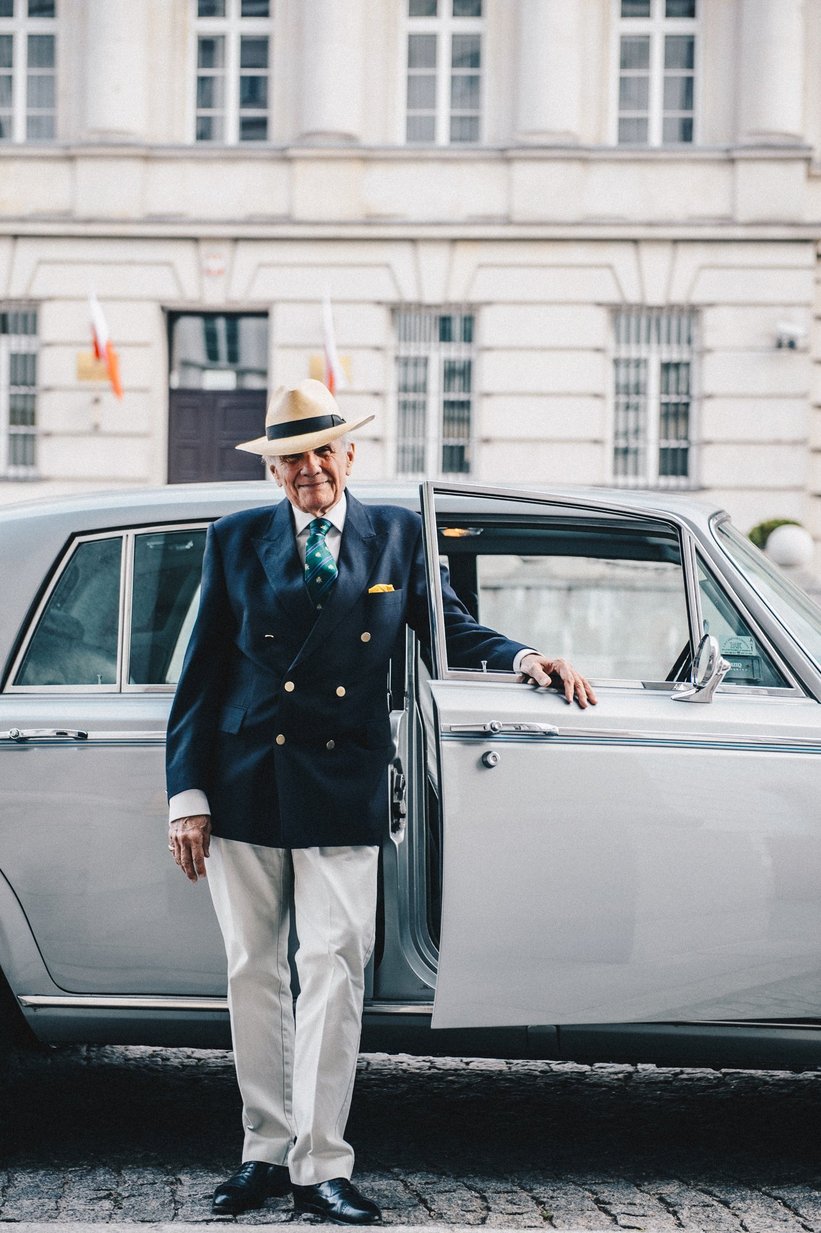
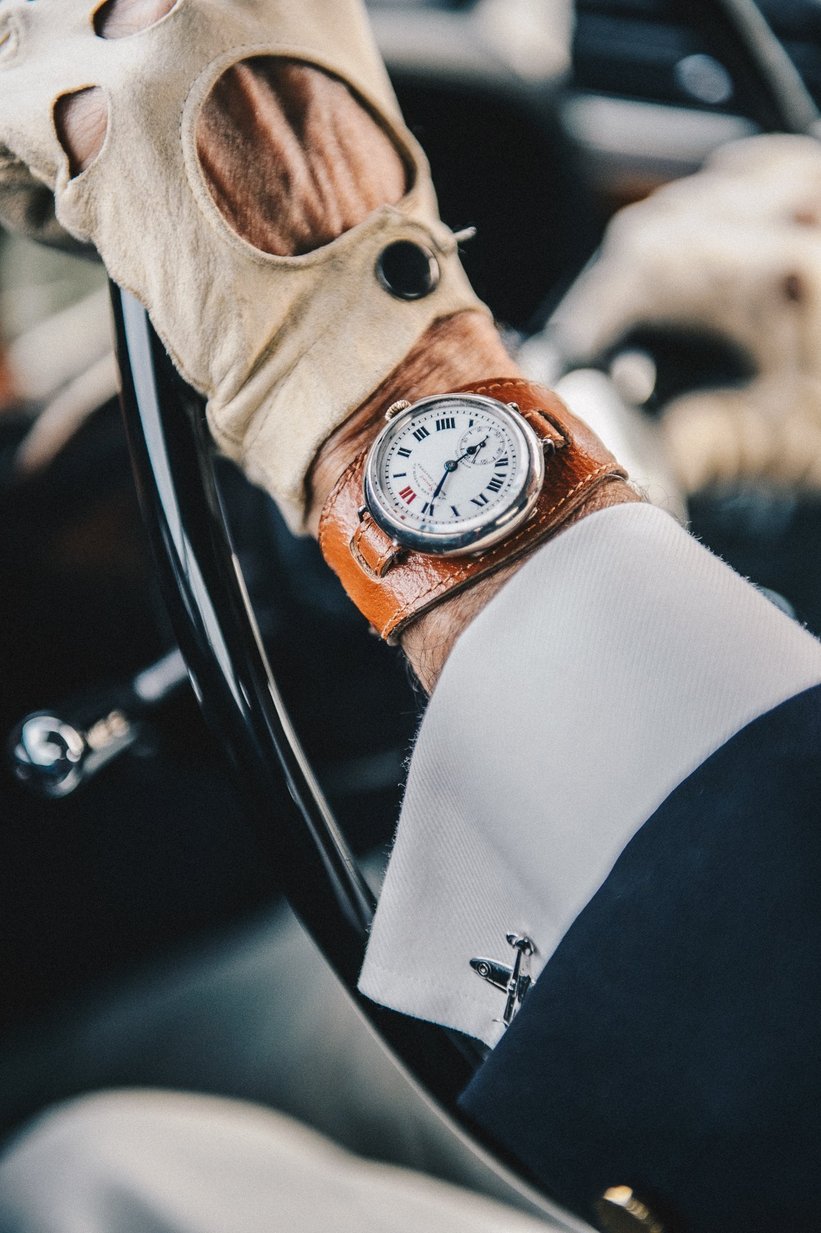
“Michael? Oh, you don’t know the real Michael!” exclaimed a socialite at a glamorous party a few years ago. We were sitting in the heavily furnished Moniuszko Salon, appropriately named after the Polish composer Stanisław Moniuszko, located in Warsaw’s most legendary hotel: The Bristol. It was built in 1901 by the pianist and Polish prime minister Ignacy Jan Paderewski and is one of the few buildings in the entire city not to have been hit by a Nazi bomb during World War II.
“Michael used to be the life of the party.” She makes those big eyes that are supposed to emphasize her last few words, while her gigantic gold earrings sway hypnotically from side to side. “He was always the first one to jump into the swimming pool in his tuxedo, champagne in hand – you know, that sort of thing.” I later found out that did actually happen at a ‘Palladian Villa’ in Berkshire.
I first met Michael around eight years ago. I needed a car for an editorial photo shoot – a machine that in some way conveyed the spirit of ‘Britishness’. An acquaintance suggested that a friend of his might like to come and help me out. That friend turned out to be Michael Moran; his car a 1974 Rolls-Royce Silver Shadow bought from the fleet of the Sultan of Oman. I saw the Spitfire decal on the windscreen, the RAF roundels on the wings and the multitude of club badges adorning the bumper, and I immediately knew that the pictures were going to turn out well.
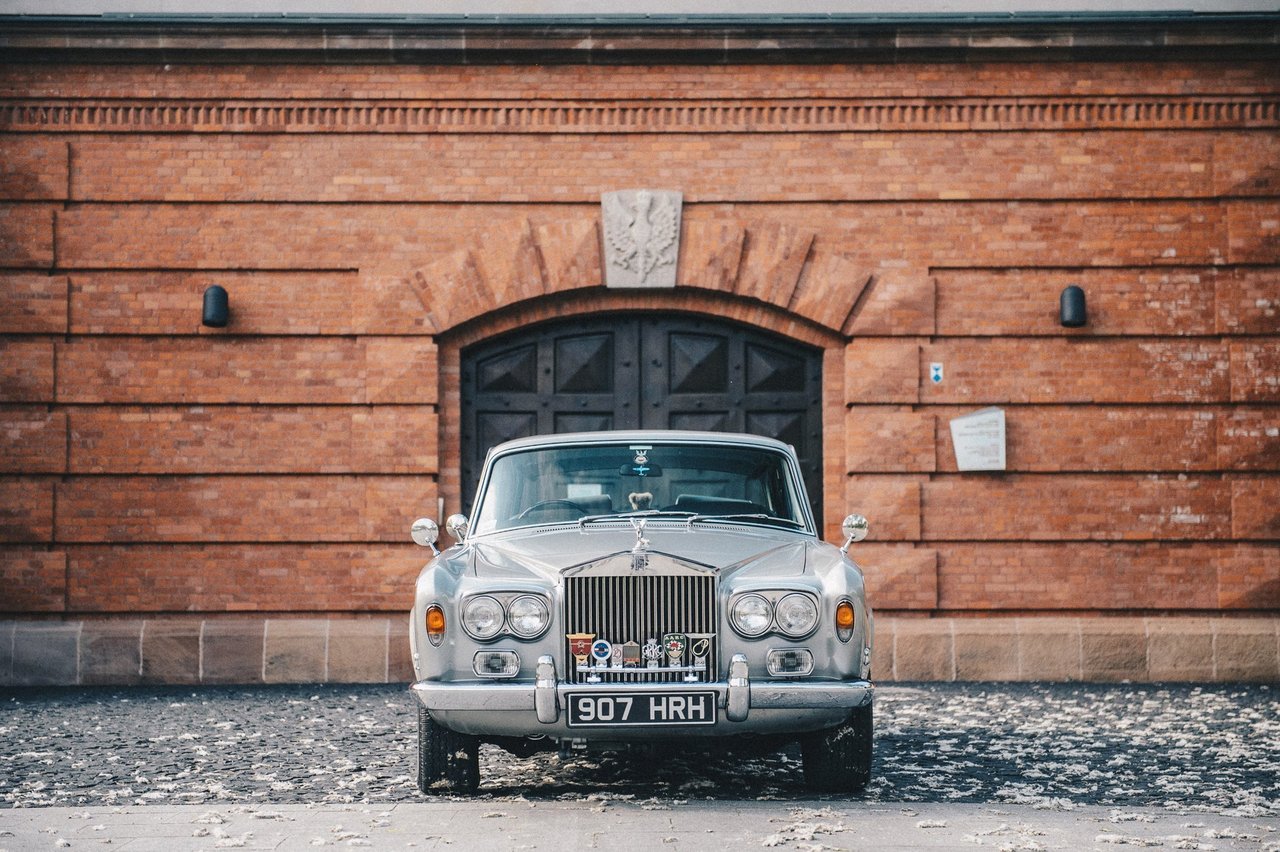
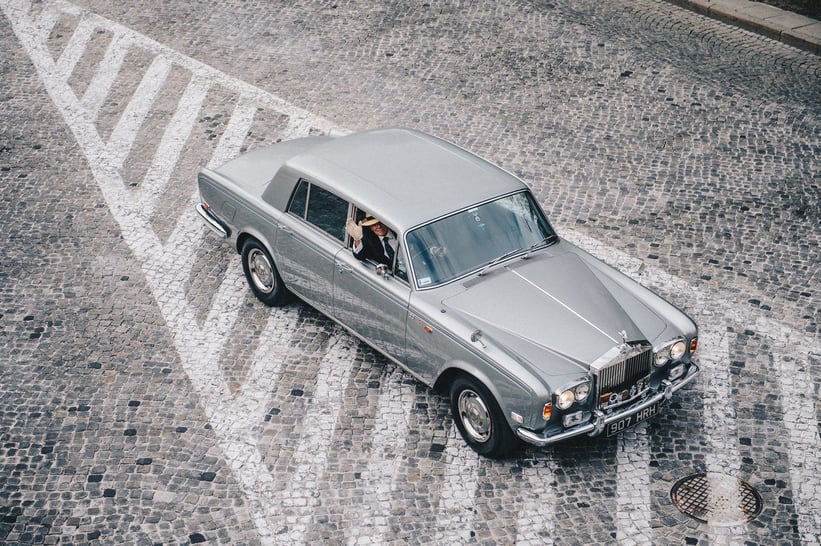
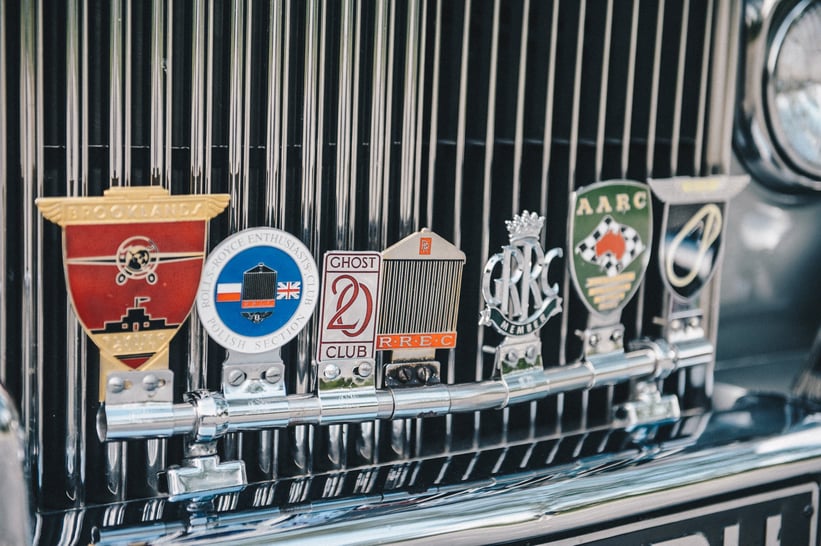
That meeting resulted in an impromptu lunch, which wound up lasting around five hours. During that time, we cursorily covered the entire history of Formula 1 motor racing, Italian architecture (Michael went to the High School in Rome) and the importance of performing Chopin on historical instruments. The latter is an issue of equal significance to preserving original cars instead of restoring them. In essence, a lot of quite pretentious stuff was discussed over a mid-afternoon bottle of Bolly. We got mid-day drunk and became very good friends.
An immediate understanding floated in the air – a reassuring conformity of similar world views, aesthetic (even narcissistic) sensibilities, artistic aspirations and lifestyle choices. Shortly after we started a car club together: Warsaw’s Casual Car Club, where the people are every bit as important as the cars.
Talking to someone regularly over a period of 10 years makes you really know them. And burdened with the knowledge of Michael’s cosmopolitan and adventure-filled life in different countries, on different continents and even on remote Pacific islands, I questioned my ability to adequately tell his story. I’ve decided that the best way is to lay it in the framework and leave it to Michael to flesh matters out. He is, after all, an accomplished author. Hoist the colours and here we go!
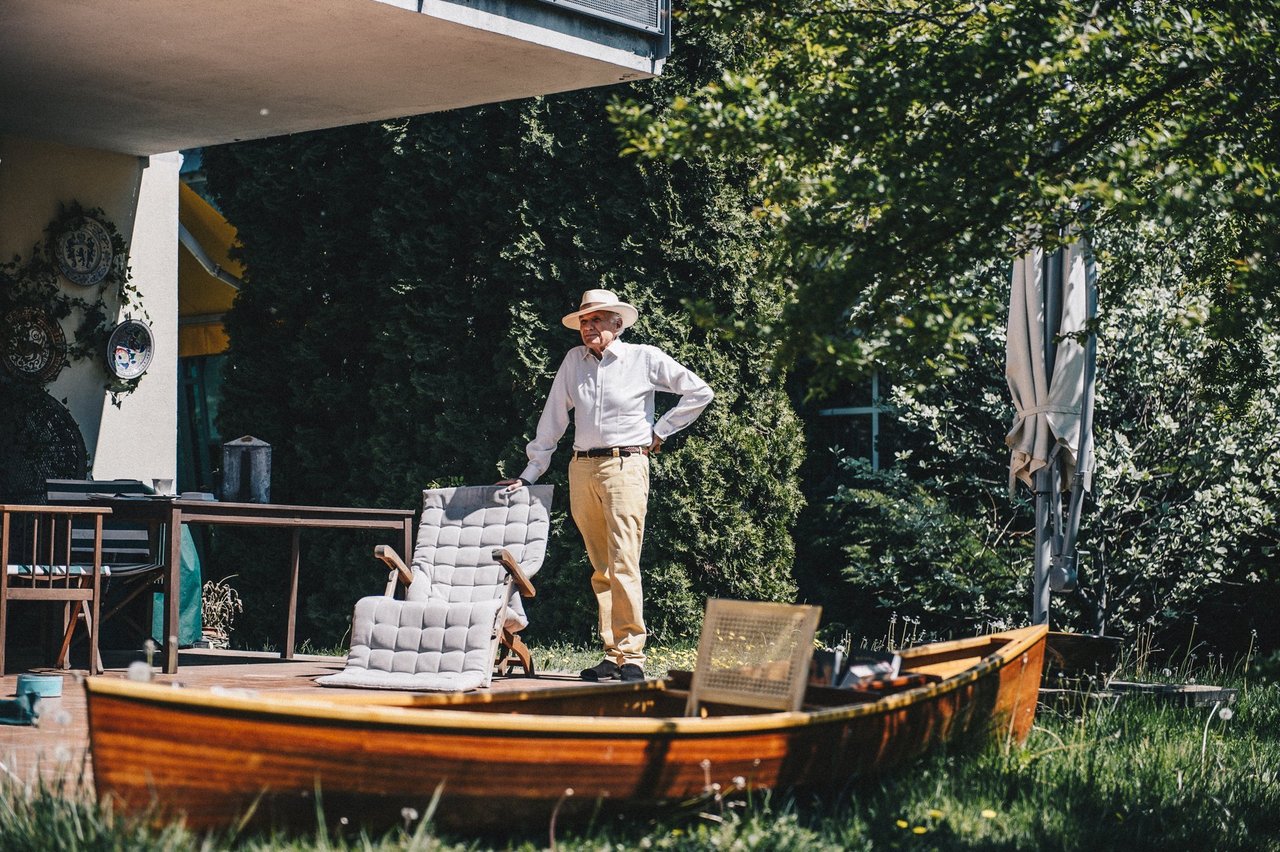
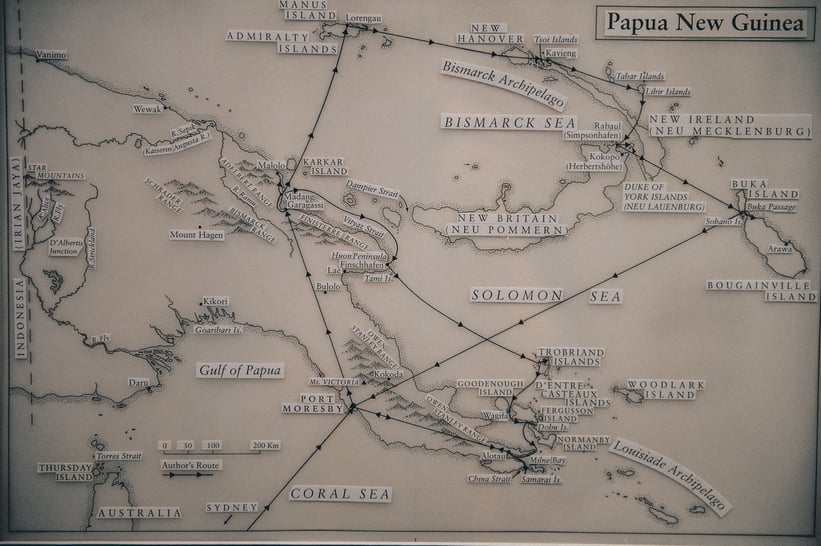
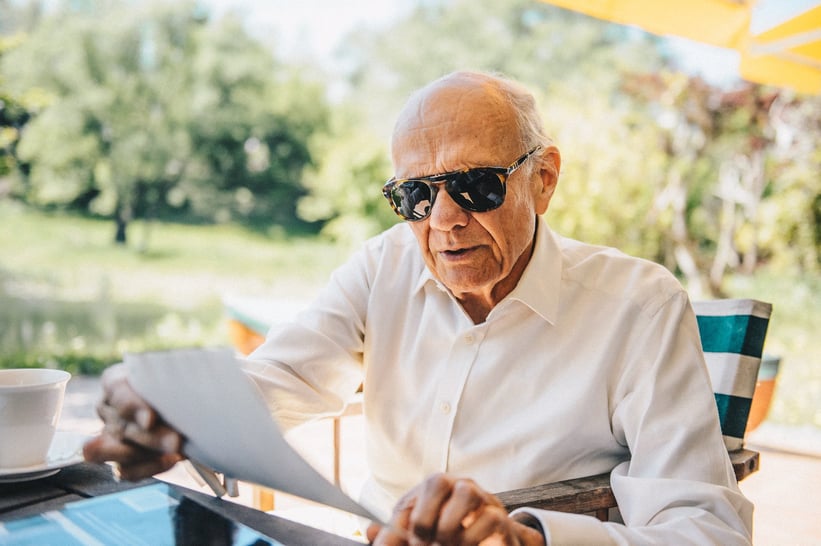
Earliest automotive memories
My father was Chief Medical Officer for the Australian Automobile Racing Club at the Warwick Farm racing circuit that functioned in Sydney from 1960 to 1973. We lived in the pits and ate in ambulances at circuits all over Australia. Fatal accidents were common in those days. He had also been an RAAF instructor on Tiger Moths in Papua New Guinea during the war and set out to infect his son with a passion for excitement in exotic machinery. He succeeded admirably to my prodigious financial cost over the years.
Father’s cars
One of my earliest childhood memories was the overwhelming perfume of new leather and effortless acceleration of a British Racing Green Jaguar Mk I my father had owned while we were living in Melbourne. In the early 1960s we spent some years abroad in Rome and The Hague. My father held diplomatic posts as a doctor at the Australian Embassy, WHO and FAO. The Dutch Grand Prix among the sand dunes at Zandvoort was a bonus located just around the corner.
While posted in Europe, he collected a new bronze Jaguar Mk II from the factory to replace the Mk I. We drove it all over Europe, venturing behind the ‘Iron Curtain’. Experiencing Checkpoint Charlie and Berlin Wall shootings in East Berlin, we also toured the former Yugoslavia with no diplomatic recognition. This meant we could have vanished without a trace, especially as the car stood out quite a bit. I think it was then that my father infected me with the virus of difficult, long-distance motor car adventures.
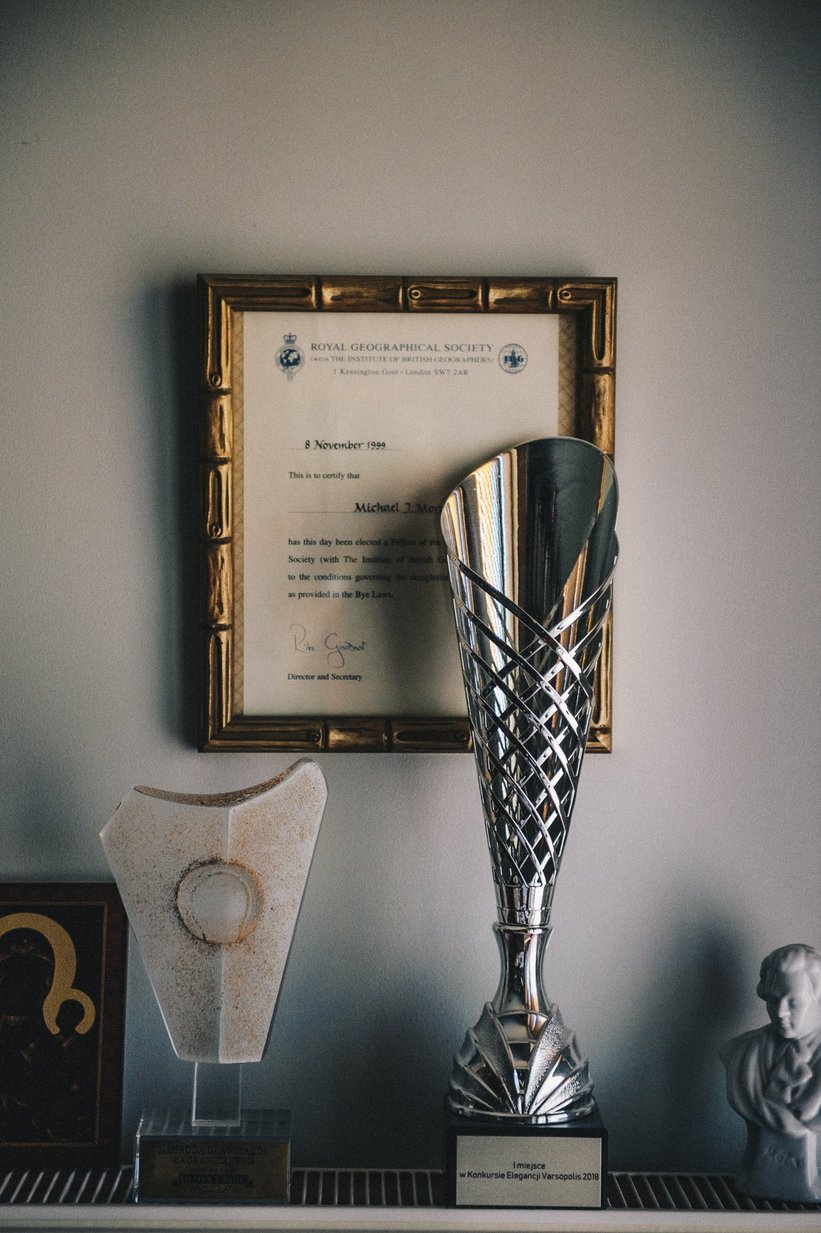
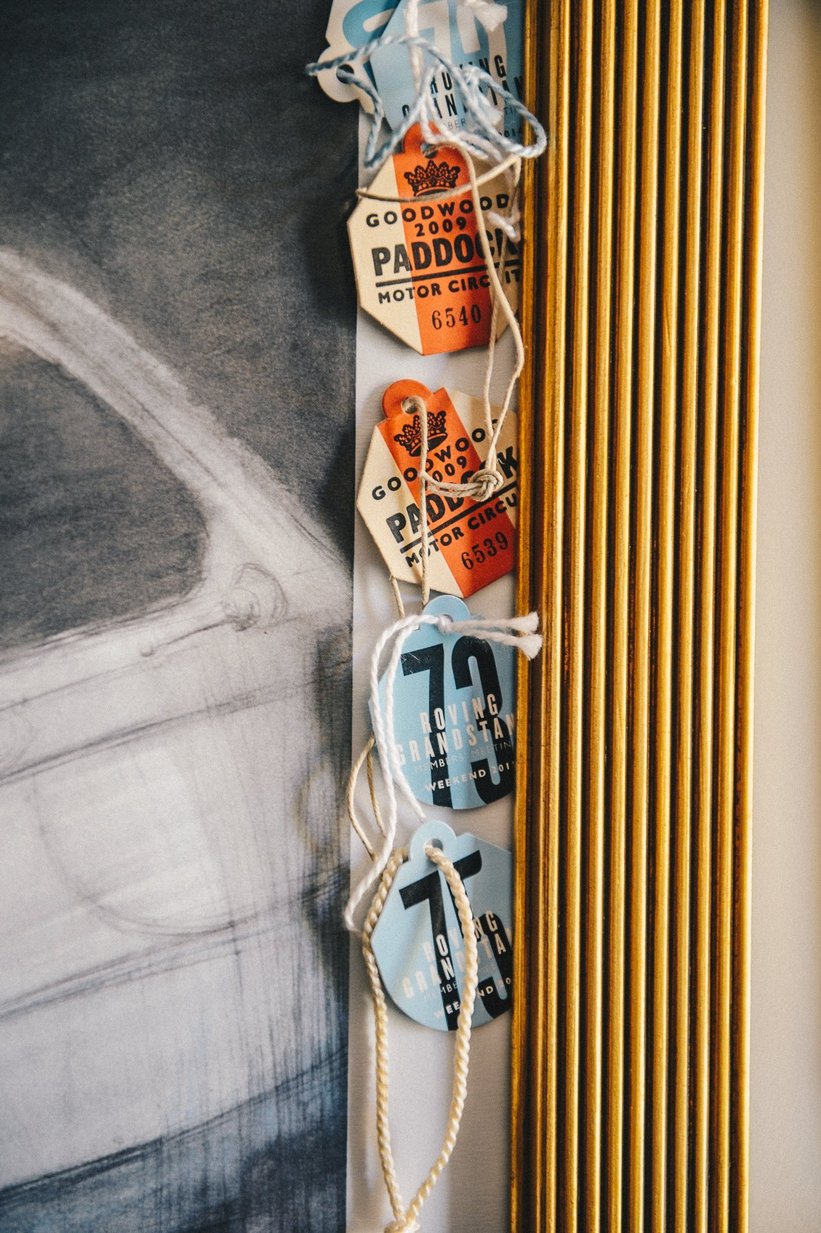
One particular Alfa Romeo…
Apart from the Jag he also owned some more exotic machinery. Whilst at university I was fond of fast early-morning summer drives along the Pacific coast. At four am one morning, while father was in Italy and my mother asleep, I stole the keys to his rare Alfa 1750 Giulia GTC. I collected Jane, my squeeze of the moment, and set off on a fast spin to Lake George some 200km south of Sydney. Coffee, cake and a passionate kiss by the shore. On return, I was skilfully negotiating a blind bend through the eucalypts, close to the limit, when I encountered in the middle of the road a house being moved without escort. I was travelling at about 150kph and the house I estimate at 12kph. The choice offered was to go in the front door or go around the side. I chose the side, skidded on loose gravel, lost control and flew up an embankment, wrecking the car.
Both of us were mercifully uninjured. My father returned joyfully from Italy with Maserati air horns and Alfa decals from the factory ready to fit to his beloved car. His contained reaction at being confronted with this mangled mess taught me a great deal about filial love and emotional discipline in life. I never saw Jane again.
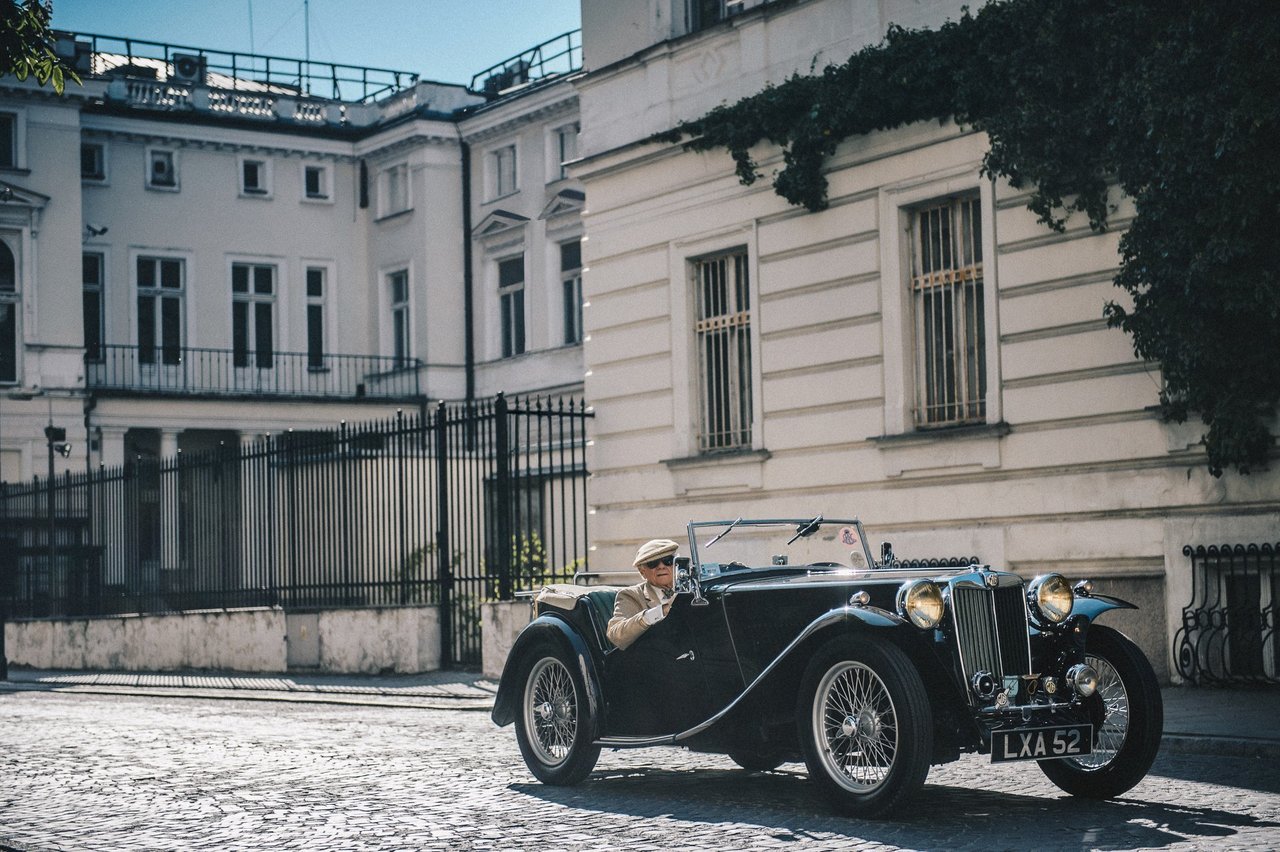
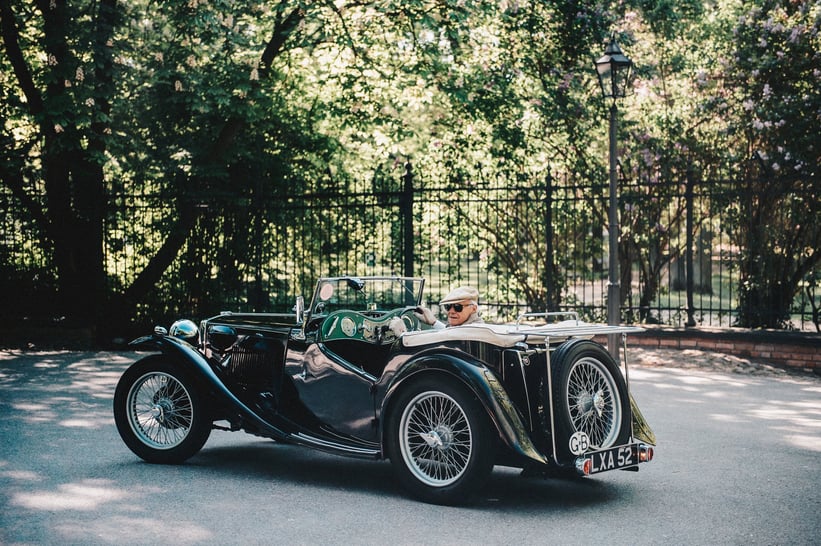

Running away from home, and the art of buying and selling a Bristol 400
My first actual car was a 'hot' MG TD which took me on many university adventures with various actresses as I ran away from home occasionally with cases of books and clothes strapped to the running boards.
At the time I had been unable get the racy, slightly louche lines and luxurious interior of the Bristol 400 out of my mind, so I decided to buy one. A superb but tired example was purchased for AUS250. The extraordinarily advanced engineering and detailed features on it were remarkable. It had tiny roller blinds on all the windows (perfect for secret assignations), a split windscreen like a fighter aircraft, and beautiful unmarked beige leather, piped burgundy.
The TD had to go. The Bristol attracted a far more demure, refined and intellectual type of girl compared to the sandy, bronzed, athletic beauties who usually clambered 'commando' and micro-skirted into the MG. There was something of the sinister film noir and Raymond Chandler atmosphere about this dark maroon car which fascinated me on the nights I drove into Sydney’s red-light district. It contributed to subtle changes in my evolving personality, confirming vaguely held beliefs concerning the positive qualities of understatement and discrimination.
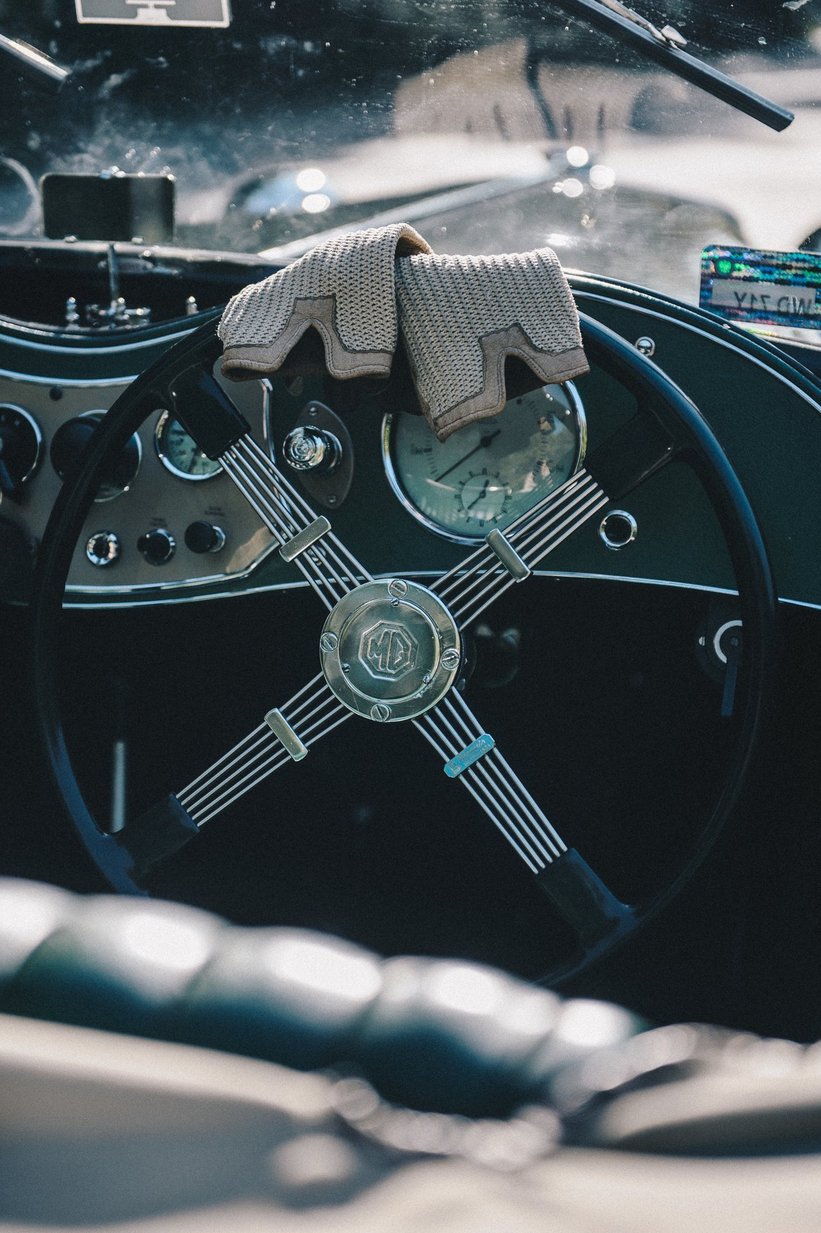
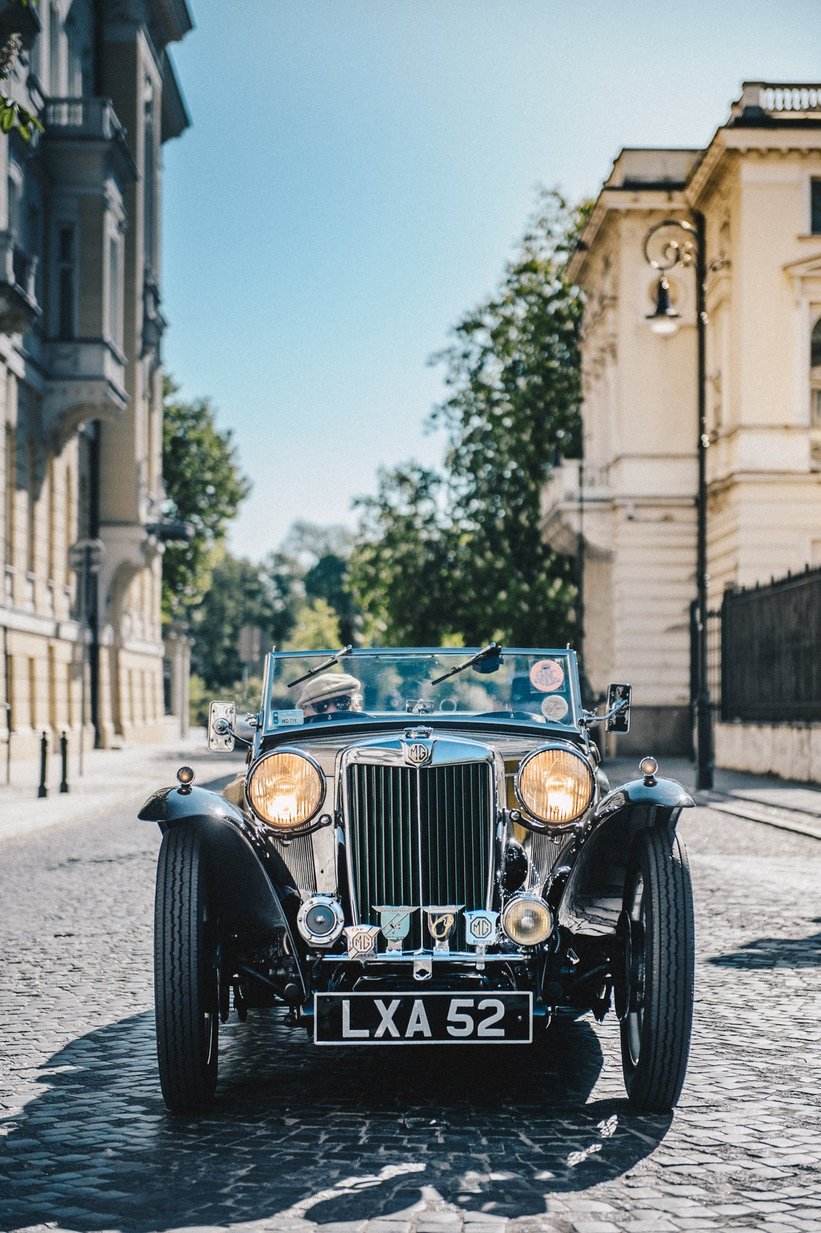
An exploding ceiling
Grandma took pity and bought me a fully restored and upgraded MG TC, in which I took long journeys from Sydney along the Great Ocean Road to the Adelaide Arts Festival where I appeared in the Bernard Shaw play St. Joan as Gilles de Ray, a serial child murderer.
My brief theatrical career did not stop me from running away to Paris on my 21st birthday in 1968. And a subsequent visit to my great-uncle, the forgotten but glamorous concert pianist Edward Cahill in Monaco.
As a break from 'all Beethoven' I travelled to Corsica and hired a Citroën 2 CV. A number of adventures followed on the tortuous roads of magnificent Wagnerian scenery. At a run-down spa I fell into conversation with a charming young lady who was sitting in the gathering dusk by a lion fountain in the village square. She asked me to give her a lift to the capital Ajaccio for shopping as buses were few. The Deux Chevaux broke down so with no mechanics available we checked into a hotel. One thing led to another.
Early in the morning I awoke with a start as there was a terrific explosion and the ceiling cascaded in fragments onto the bed. Odile screamed. A man was standing in the bedroom doorway with a shotgun he had just fired. The police quickly arrived and assured me their country was hospitable to visitors, to which I hastily and enthusiastically agreed. Unfortunately, I had broken the strict betrothal rights that were observed there. I had to be deported immediately for my own safety. I boarded the plane absurdly dressed in yellow pyjamas printed with miniature vintage cars. I telephoned Uncle Eddie from the gloomy jail where I was being held. He was deeply shocked but agreed to meet me at the airport in Nice. I shall never forget his face.
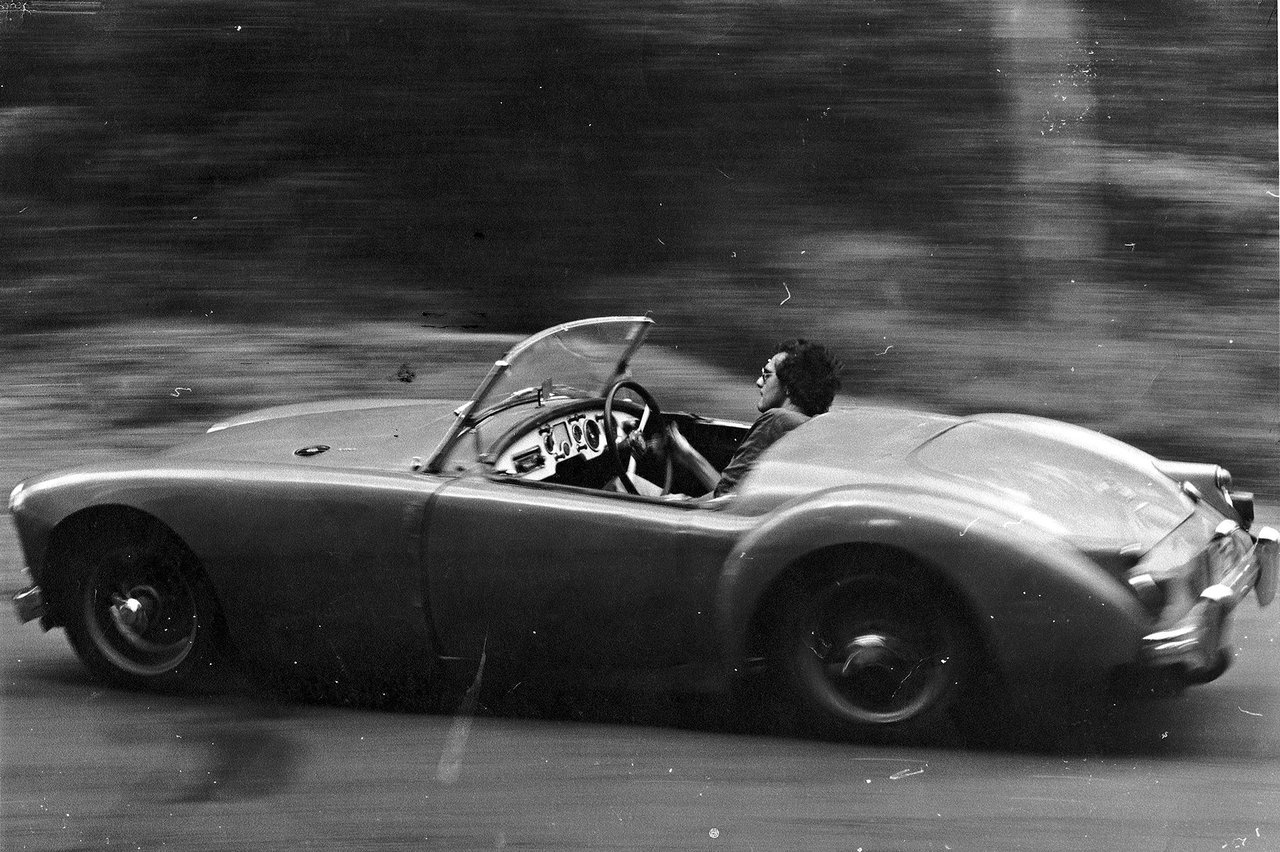
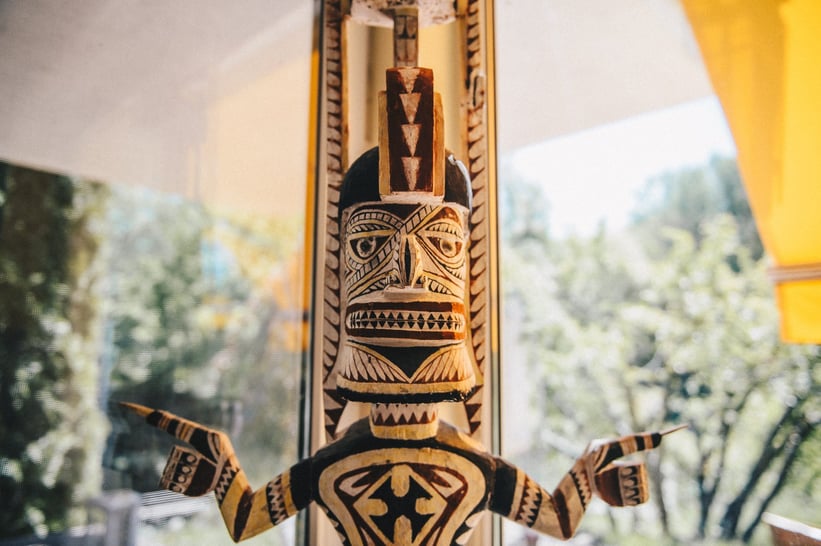

Mutiny on the Bounty
Sometime in 1970 I decided in the revolutionary mind-set of the day to open a coffee shop/restaurant and extend the radio station on remote Norfolk Island in Oceania. This fascinating place was the most terrifying penal station in the entire nineteenth century convict transportation system in Australia. Queen Victoria had later settled the descendants of the mutiny on the Bounty there. My hedonistic, beach and jazz-bar lifestyle was enhanced first by the purchase of a Mini Moke and then by a weary MGA. Training for a Private Pilots License on a Cessna 175 was pure joy as it brought me rather closer to my father and his wartime experiences.
Life on the island meant rust and any passenger in the MG needed to wear protective overalls against coral dust as part of the floor was missing. As it was the only sports car on the island I became a type of conspicuous celebrity. I had fallen in love with one of the alluring, part-Polynesian descendants of the Bounty which led to bouts of violent jealousy from one of her admirers. He once chased me by moonlight along the sinuous island roads. Dressed in a wet suit and riding a motorbike he shot at me and I discovered a bullet had penetrated the door and creased my leg. Following that incident, I decided to depart and join my family in London. Two days after I sold the MG, a bolting horse leapt on it ensuring its final destruction.
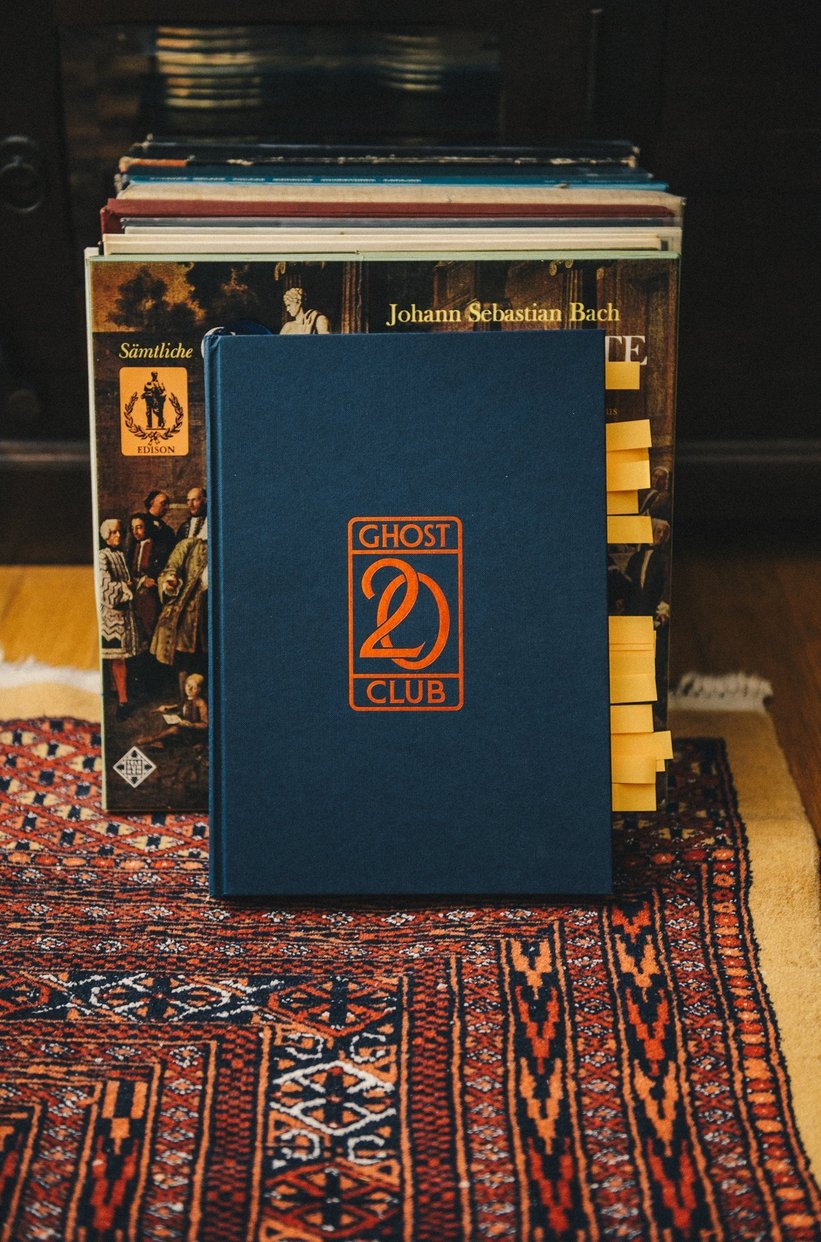
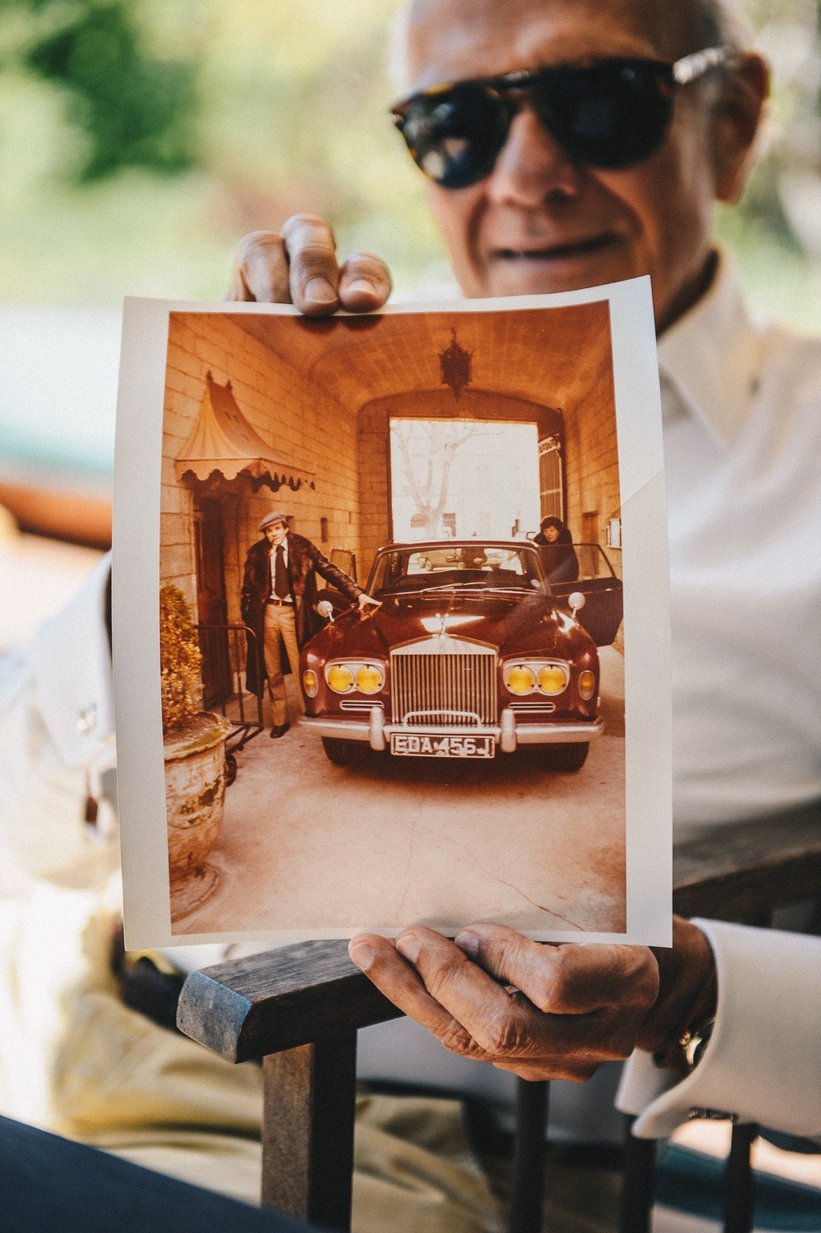
There is more to life than cars…
I arrived in Marylebone around 1974 and worked first as a croupier at glamorous Crockford's Casino above The Mall, later as a Lecturer in British Cultural Studies at a Swiss Foundation in Eccleston Square. This financially facilitated my serious piano and harpsichord studies. Music has always been my most important mistress.
My father continued his Jaguar obsession with first an XJ6 and later an ivory V12 Series III E-Type 2+2. I on the other hand continued to disappoint him as a driver, when I lost control of it in the wet exiting Trafalgar Square sideways one Sunday afternoon. Fortunately, luck was on my side and we slid, with enviable precision, into a spare parking space to the applause of bystanders who thought this was a purposeful stunt.
Upon his return to Australia, he left in my care a 1968 Regal Red Rolls-Royce Silver Shadow, before shipping the car to Sydney. My passion for the marque was born during long distance drives to Monaco and Paris to meet my great-uncle the concert pianist. Various romantic adventures at English stately homes confirmed in my mind and heart the metaphysical influence of the Rolls-Royce brand.
This was followed by a rather sterile period of intense domesticity and work before my remarkable son was born in January 1979. As a grim reflection of the terrors of responsibility, I purchased a new Renault 5 GTL.

First novel
In 1984 my relationship broke up despite my joining the religious cult that had attracted his mother. As a distraction, I took one year's leave of absence to live on a dairy farm on the Cornish coast in an ancient manor house at Crackington Haven that had once belonged to the brother of William the Conqueror.
The superbly original and unmolested BRG 1967 MGB GT I owned at the time was perfectly suited to the narrow English country roads. I rode, climbed the steep coombes, helped on the farm driving the tractor and began my first historical novel set on Norfolk lsland entitled Point Venus. Definitely superior therapy to an expensive psychoanalyst.
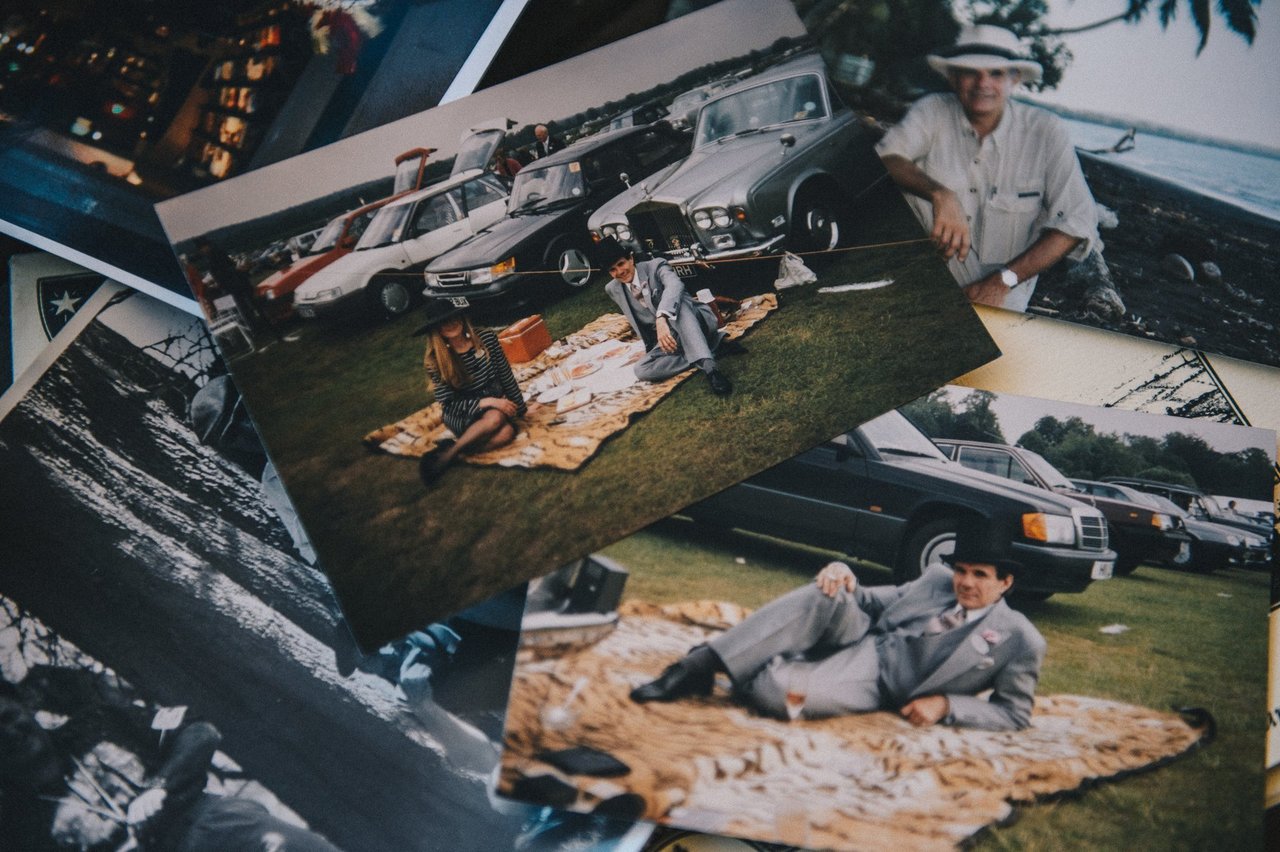
The Song of Roland
In 1987 I set up a luxury cultural tour company in England based around my work. Picnics with the well-heeled every weekend in summer at great English country houses belonging to the National Trust staying at Relais & Châteaux hotels etc. Being short of funds, to make it more attractive to pundits, I purchased a 1974 Shell Grey Rolls-Royce Silver Shadow. 907 HRH once belonged to the fleet of the Sultan of Oman. Unfortunately, the business was not cost effective, so I closed it down but kept the car.
This impressive vehicle took myself, much Bollinger champagne and some attractive ladies through the London Season - Henley, Ascot, Hickstead, Lords, Goodwood, Guards Polo, Cartier Polo as well as countless influential parties, operas and concerts. Through its influence I encountered the exotic French-Algerian, the Yugoslavian, the French-Corsican, the German, the Costa Rican, the Chanel girl, the Bulgarian and one Penhaligon’s shop assistant. On our first date, the Italian from the Ravenna Accademia Di Belle Arti took me to the cemetery to show me her late husband’s grave as she had sculpted his headstone herself… These experiences turned me, sometimes against my will, into somewhat of an International Man of Mystery.
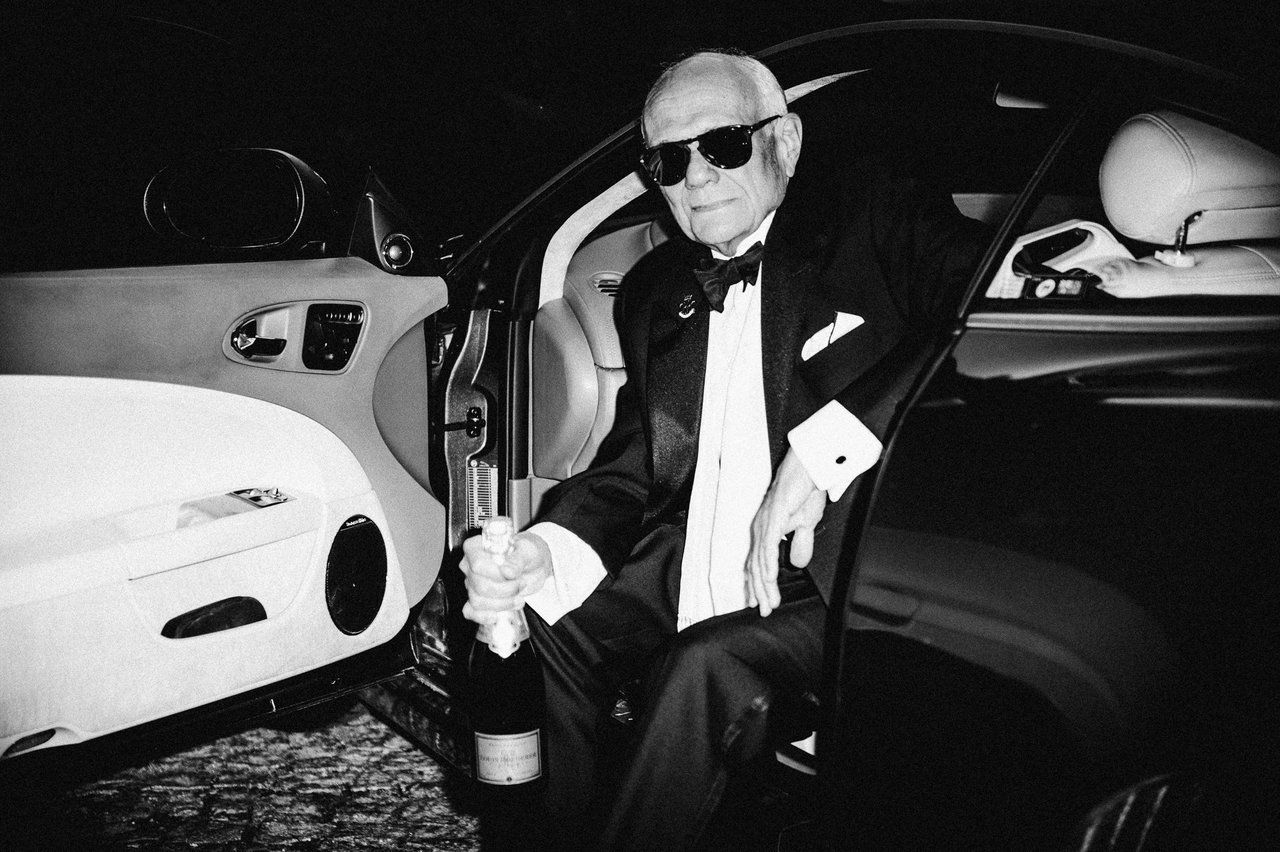
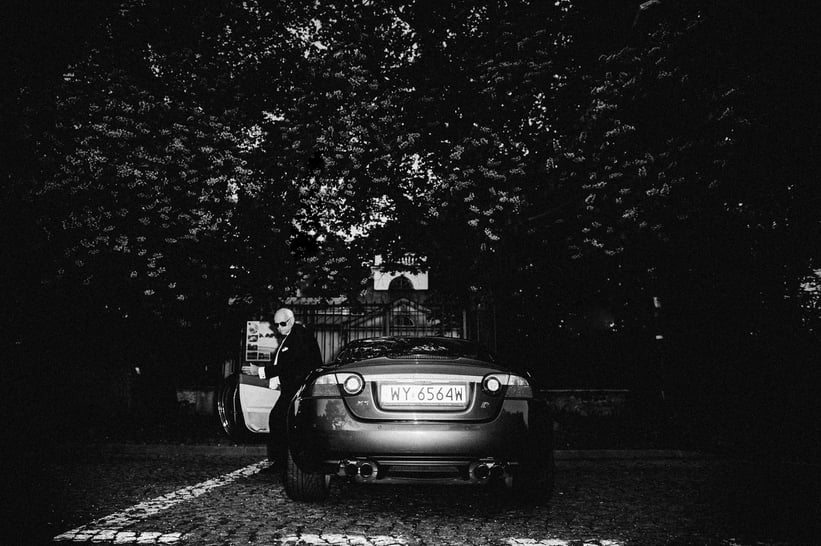

Warming up the Jaaaags
Having by now joined the GRRC, I kept for a short period one of the rare factory-prepared Jaguar XK 150S cars. A former owner was 'Bunty' Scott-Moncrieff. I couldn’t afford to restore the car. A Swiss-German girlfriend of the time was always asking me: “Michael, why are all your credit cards always maxed out?!” Unforgettable though was the fantastic, freezing dawn drive in a Lynx D-Type replica the company allowed me. Clearly Jaguar lies buried deep within my genetic material.
Many years later, a short spell in hospital convinced me of the fragility of life and I decided to implement Peter Sellers remark 'You have to live before you die, or you'll die before you live.' I bought a gorgeous, fast and furious, 'Portfolio Version' 2008 Jaguar XKR with a supercharged V8 and a Bowers and Wilkins sound system (reproducing the music of mighty Bach). The two are in perpetual competition for my aural pleasure.
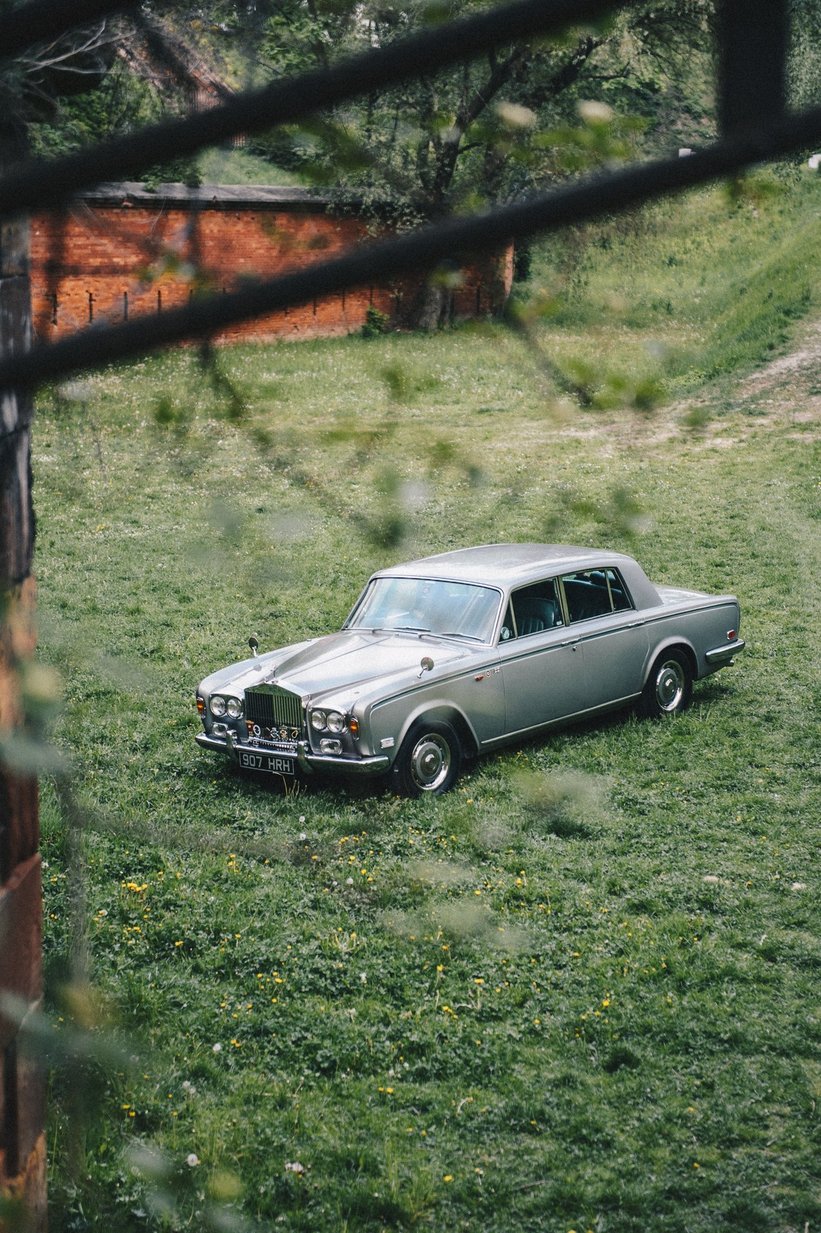
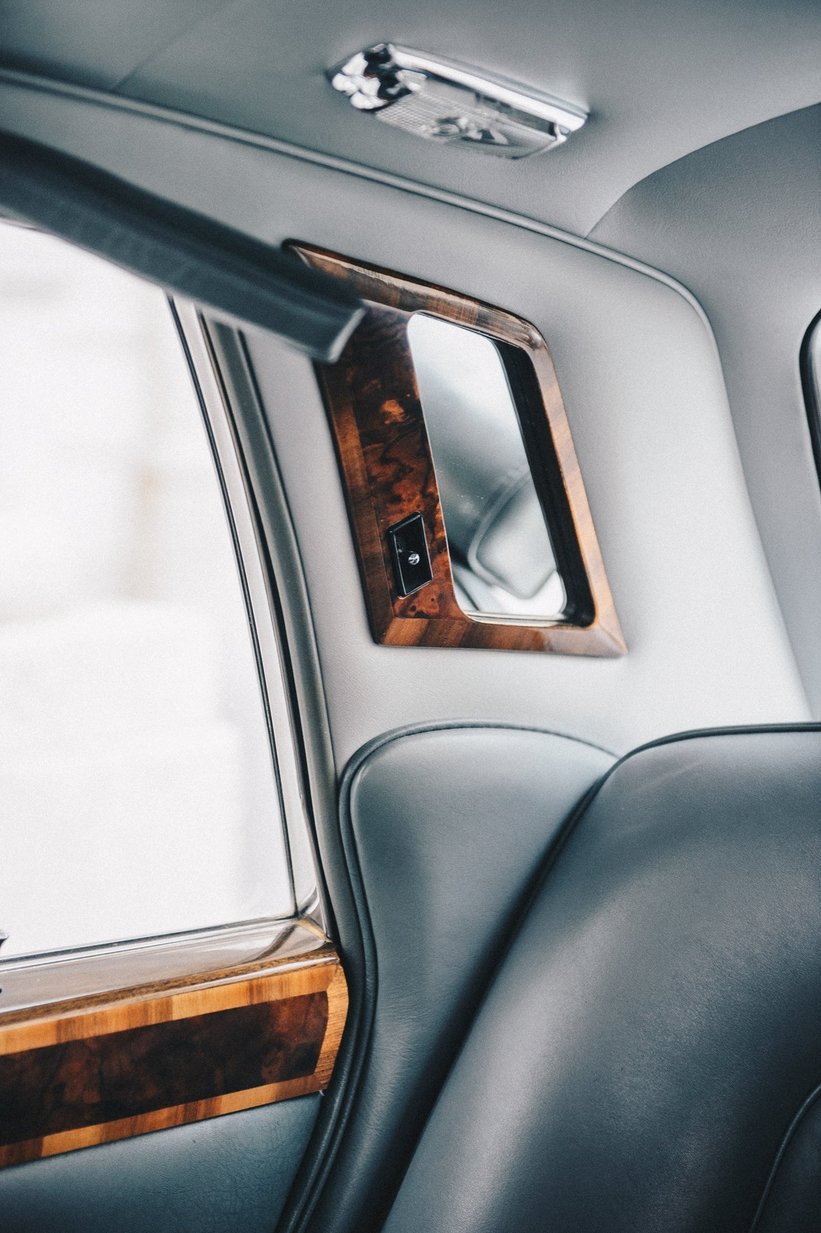
Roland travels to Poland
Having played the music of Fryderyk Chopin and with a glamorous concert pianist in the family, in early 1992 I accepted the leadership of a Polish joint business venture with my Swiss Foundation in Warsaw. I decided to drive the Rolls-Royce for this contract which was a significant risk in those days as Russians with cheap Kalashnikovs were regularly hijacking cars. Although the company had provided me with an FSO 125p for daily use, Roland and I never had a bad experience in 'wild-west' style in 90’s Poland. On the contrary, on many occasions people would throw flowers onto the car when I drove by, demonstrating the power and respect any Rolls-Royce, even a modest one, commands. And so… in 1993 Roland and I took part in the first classic car rally around Poland for eighty years.
This complete and wildly exciting experience included using the car off-road where I broke the left bank manifold while crossing a gorge. The repair was done by a Polish mechanic who had to make his own tools to accomplish it. He turned out to be quite skilled, having had previously repaired the Mayor of Chicago’s car after a bomb explosion. This saga is described in my book A Country in the Moon: Travels in Search of the Heart of Poland.
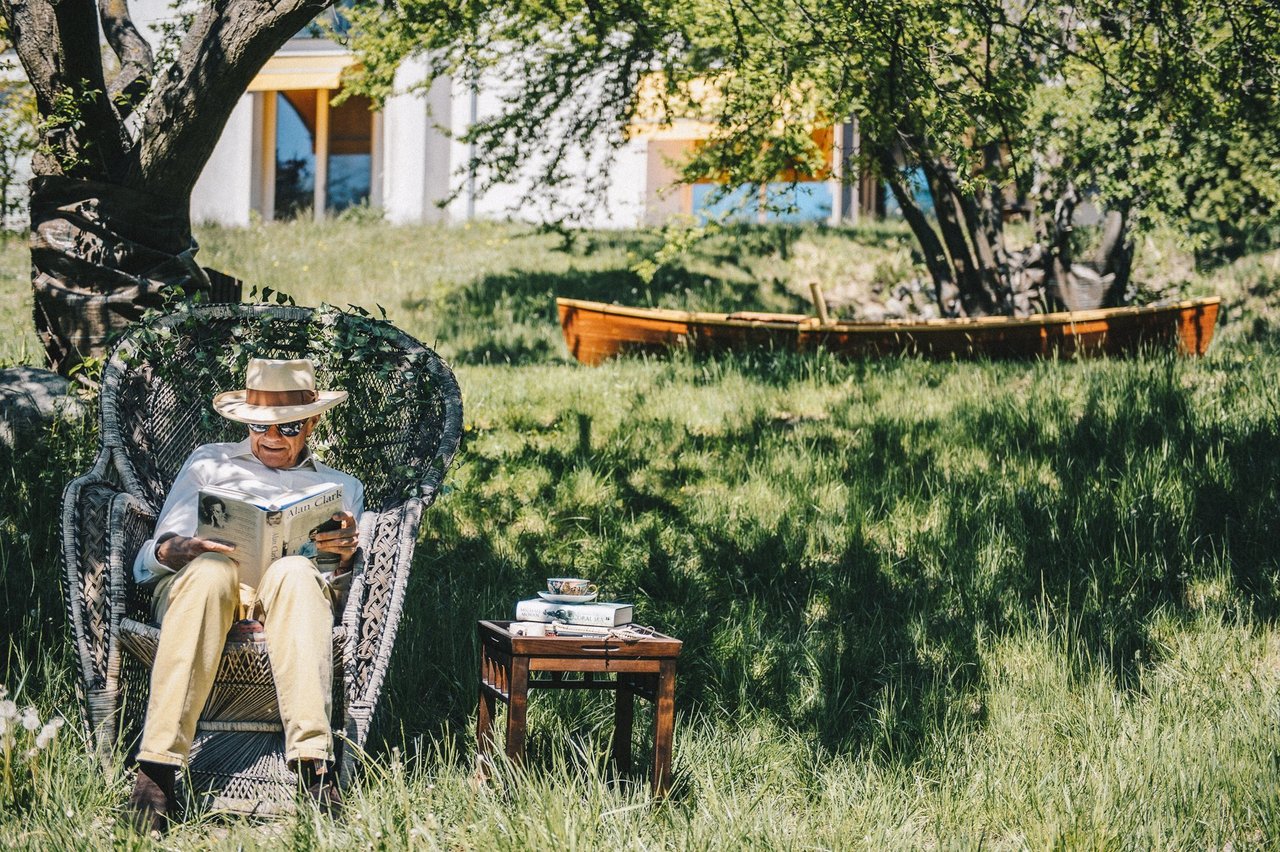
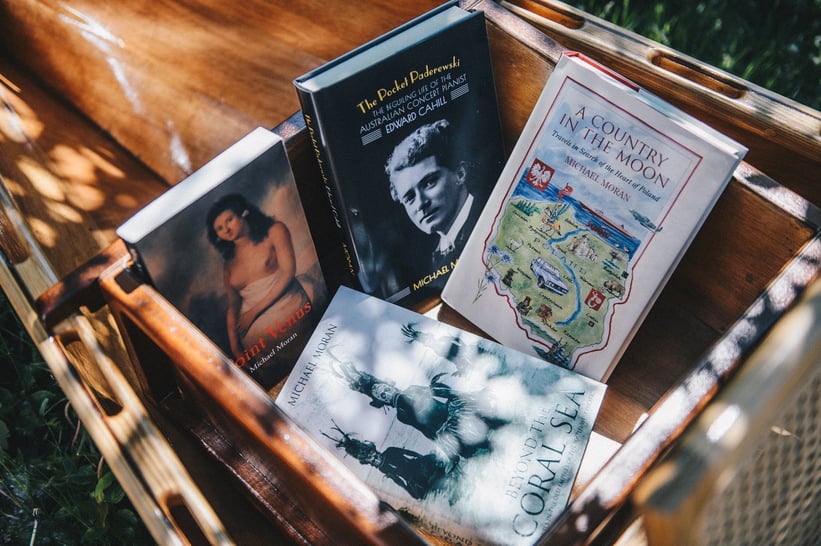
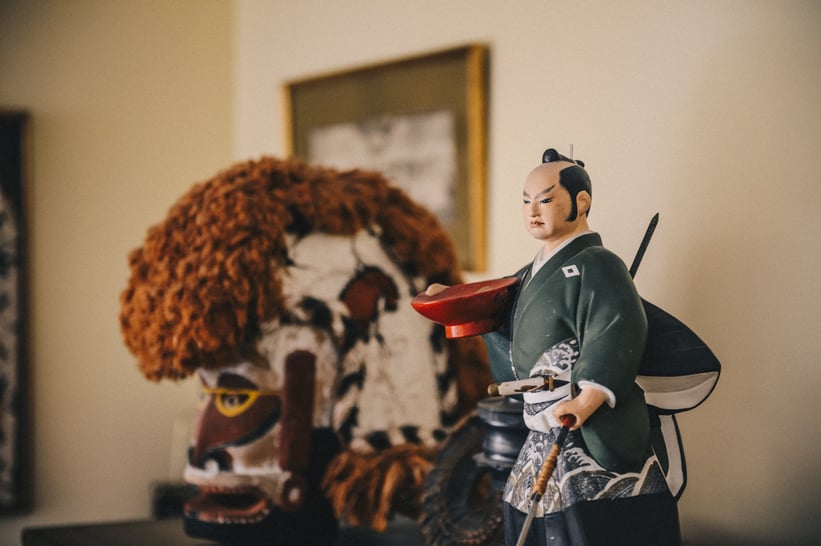
A pirate’s life for me
In 1998 my historical novel Point Venus set on Norfolk Island was published in Australia and I was commissioned by HarperCollins to write Beyond the Coral Sea: Travels in the Old Empires of the South Pacific. This involved a long, adventurous, dangerous tour of the Island Provinces of Papua New Guinea and sailing on the Endeavour Replica as supernumerary crew in the Joseph Banks Cabin. Moran channelling Errol Flynn? This was the first book on the region for 100 years and therefore the one of which I am particularly proud.
In 2004 I sold my maisonette in Marylebone and moved to Warsaw for good. After purchasing a property there, I gave much thought to my new car, and ended up with a Peugeot 307 CC. A model which is not valuable enough to deprive me of sleep when parked overnight in the dark street of a strange town but has good touring performance – the French do recognize how to balance comfort and handling.
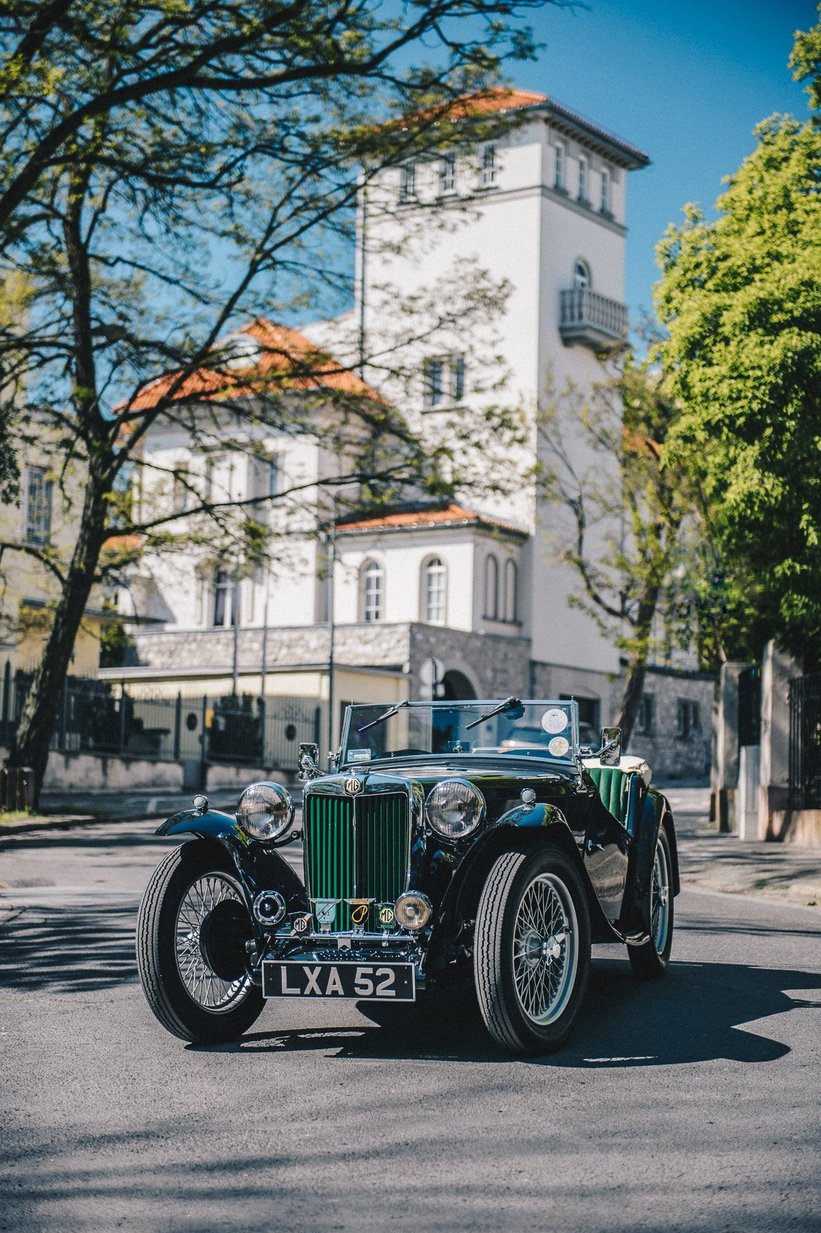
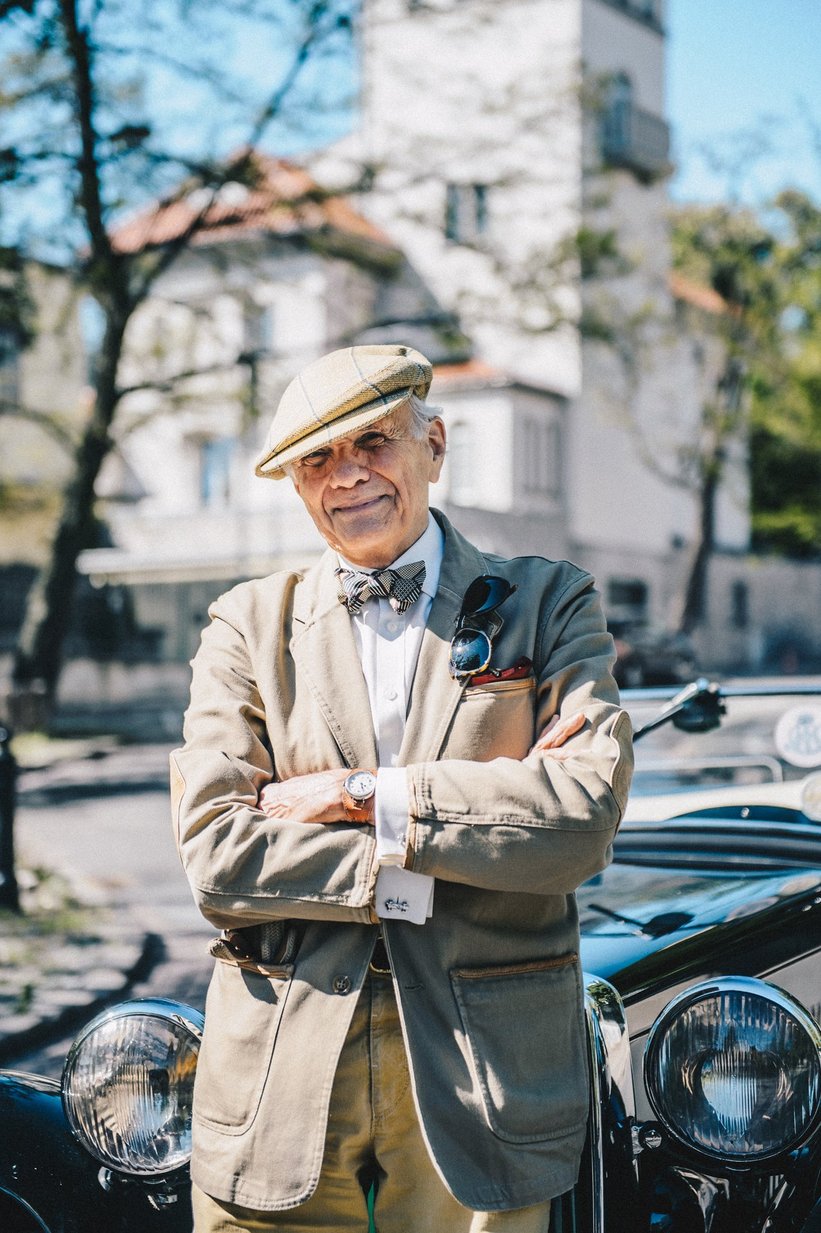
And so, life goes on…
Feeling my youth inevitably slipping away, I attempted to recapture it by acquiring a concours 1949 MG TC. A rather particular car featured in two important books on the marque. By this time, I had built a significant career as an online music reviewer of important musical competitions and festivals all over Europe. As usual music and cars went hand in hand and in February 2013 the Warsaw Casual Car Club was established. I was, against my will, elected chairman.
Then followed six years writing the biography of my great-uncle the concert pianist, Edward Cahill (1885-1975). Here was a man equally in love with the music of Chopin. The only difference being his overwhelming talent and that he played for most of the crowned heads and aristocracy of Europe (Queen Mary among them). Coincidentally he loved fast cars such as Bugattis and often visited the Brooklands circuit. Researching this book meant going on long road trips retracing Eddie’s life through the old continent and going back home to Australia.
The result was the publication of: The Pocket Paderewski: The Beguiling Life of the Australian Concert Pianist Edward Cahill and an affliction by the sad observation that people do not seriously tour Europe alone in their classic cars anymore.
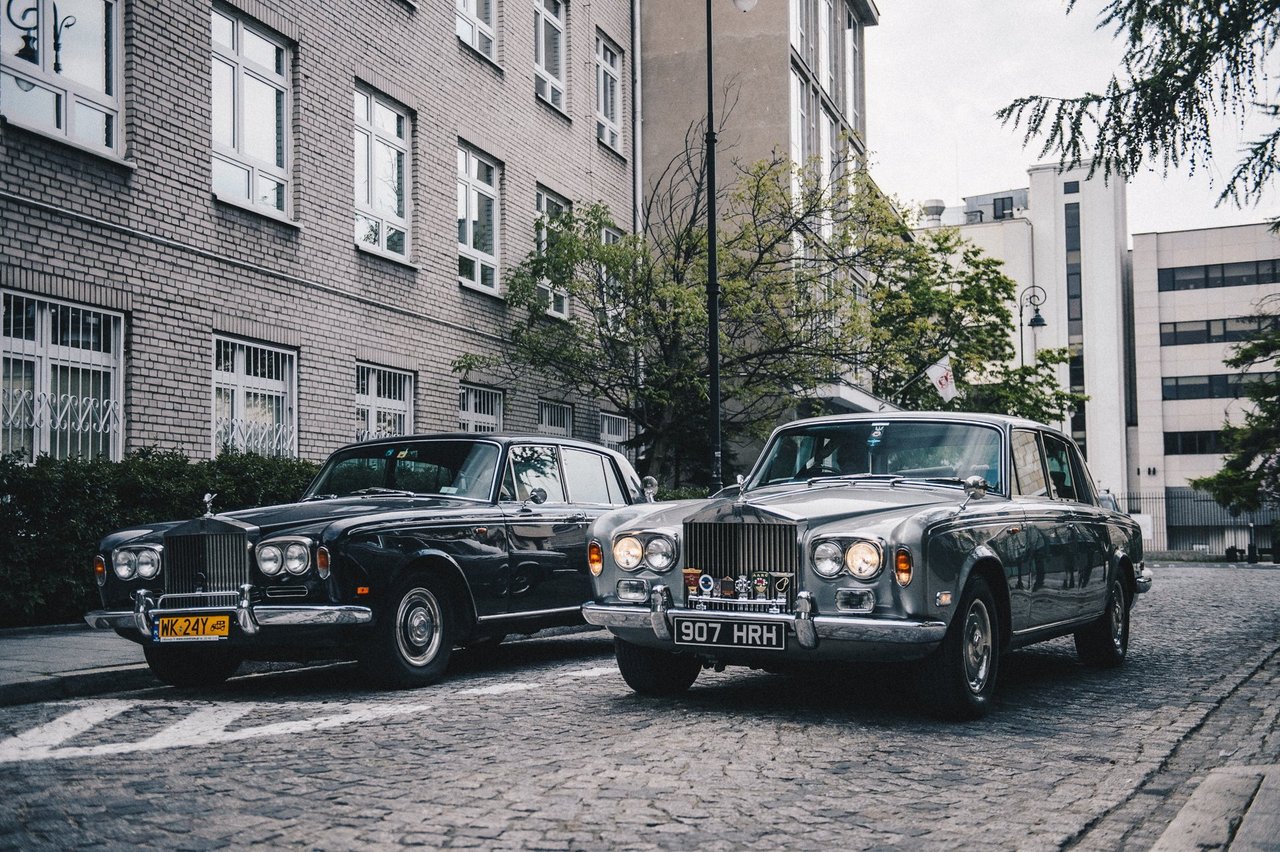
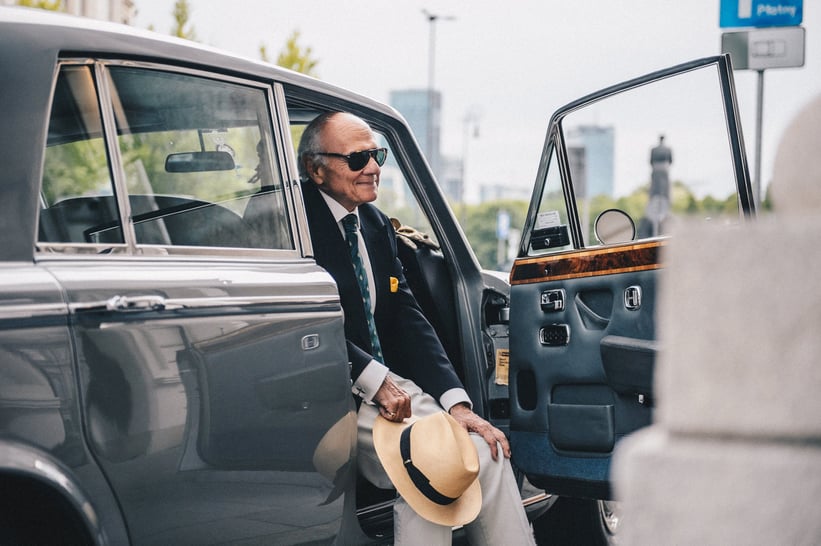
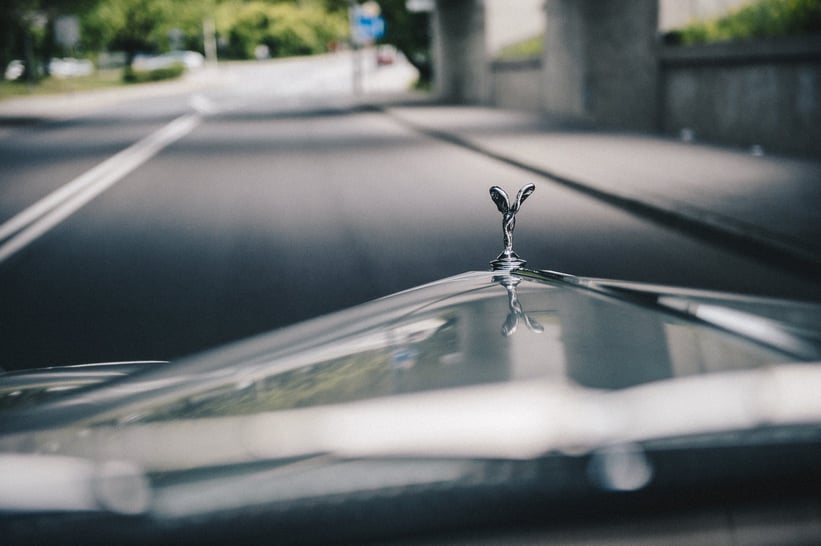
More than a car
If I had suggested to anyone in the early 1990s that a Polish Section of the Rolls-Royce Enthusiasts' Club could be established, I would have been considered 'a suitable case for treatment'. However, this was accomplished on 23 April 2016 and I was elected Secretary.
As life goes on the adventures become more and more civilized. When the 20-Ghost Club visited Poland in the summer of 2017, some 30 unique, pre-War Rolls-Royces took part. Such a large group of pre-war cars visiting Poland was completely unprecedented in the history of the country. Trying to be helpful and fulfilling my RREC obligations, I facilitated the Warsaw section of this extraordinary visit. All the members of the 20-Ghost Club were surprised at the historical fascination of Poland and its extraordinary modern development over the last thirty years. I was subsequently elected a 20-Ghost Club member - a rare honor as I do not own a Silver Ghost or pre-war Phantom, a proviso for membership.
Then again… owning and maintaining a complex car such as a Rolls-Royce Silver Shadow in Poland (mine for 33 years now) remains an ongoing challenge, and I’d like to think that finally - in a way - the universe rewarded me for it.
As that great engineer Sir Henry Royce once commented, remarks that now steer my future destiny: 'Whatever is rightly done, however humble, is noble. The quality will remain long after the price is forgotten.' One should never forget, a Rolls-Royce is far more than a motorcar. It is a way of life. My life.
Photos: Błażej Żulawski for Classic Driver © 2020



















































